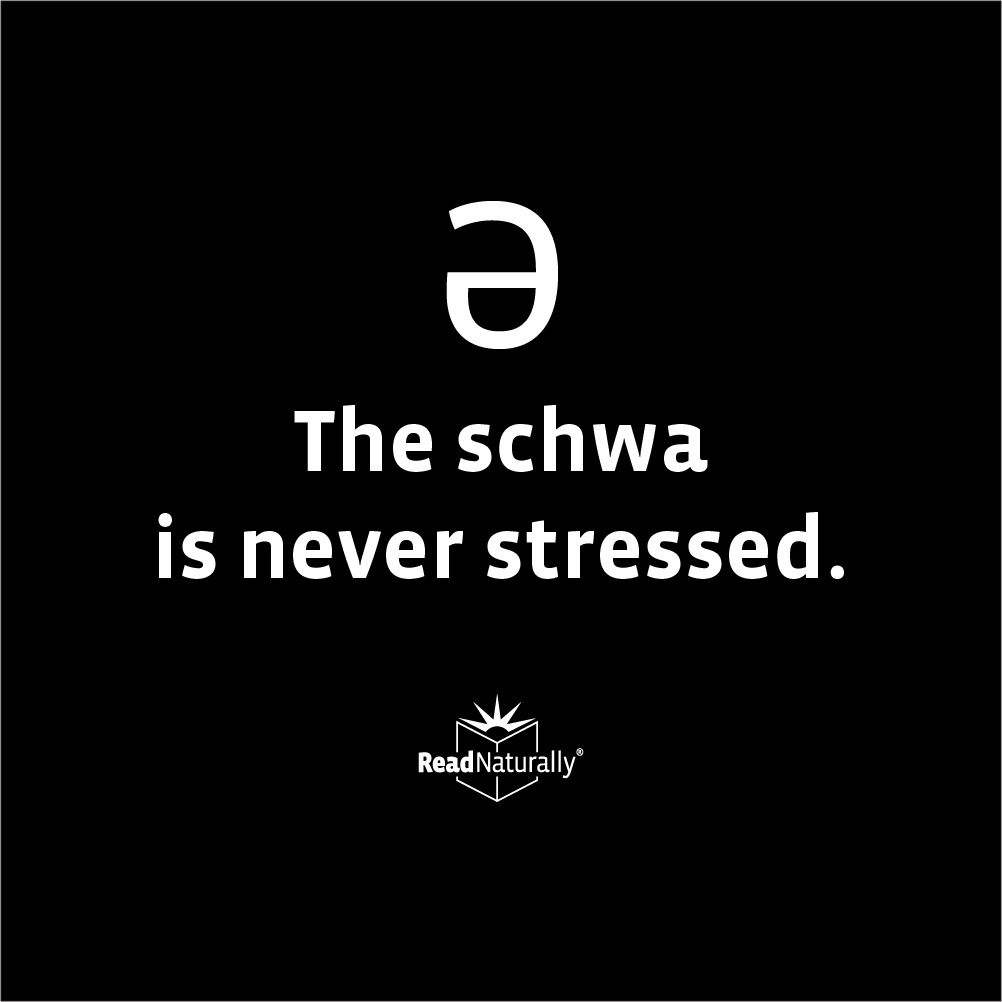
It's now well past February, but the remnants of Valentine's Day still linger in my couch cushions. The handmade cards are always my favorite ones to find… especially the ones wishing a "Happy Valantine's Day." I asked my third grader if he knew what makes the word Valentine so hard to spell. He guessed, "Because it's a long word," which is half right. Long words are usually multisyllabic, and multisyllabic words usually have a schwa. The schwa sound—such as the one on the first "e" in Valentine—is notorious for making words difficult to read and spell.
Experts in the Science of Reading recommend explicit, systematic teaching of phonics in order to build automaticity and fluency in reading1. This includes explicit instruction in the schwa sound. The schwa is the most common vowel sound, and any vowel can be a schwa. If students are able to correctly identify the schwa and build their understanding of how it functions, they will have more success reading and spelling words with one or more schwa sounds.
Just as the words with schwa sounds are tricky to read and spell, the schwa can be tricky to teach. It doesn't always sound the same when pronounced. Often, it's hardly pronounced at all, such as the "a" in "dental." Any vowel, including y, can be a schwa. Regardless of the vowel, students will learn that the schwa most often sounds like a short "u", like the "u" in "cup." It's usually found in the unstressed syllable(s) of multisyllabic words, but the schwa can be present in single-syllable words like “the” as well. Where should you begin?
Before teaching the schwa, Read Naturally recommends solidifying students' skills in short and long vowels as part of a systematic phonics curriculum that builds from easier to more complex phonics skills. As students move to multisyllabic words, Read Naturally recommends trying a schwa sound if the decoded word parts do not sound like a familiar word. When a schwa is present in multisyllabic words, it's in an unstressed syllable. Unstressed syllables are often less crisp and clear-sounding. Again, consider the "al" in "dental.” When a student decodes “dental” as /dĕn tăl/, we encourage the student to say the word “the way we really say it,” with a schwa sound in the unstressed suffix.
The more words like this your students practice with, the better they will become at identifying which vowels have a schwa sound. To solidify their understanding, students should have exposure to many examples of the schwa sound on various vowels. For example, consider common words such as rabbit, mitten, animal, carrot, upon, and vinyl. These words all have schwa sounds in the unstressed syllables, but the schwa is associated with a different vowel in each word. Students will benefit from identifying which vowels are short or long (the "a" in rabbit, the "i" in mitten), and which are schwa (the "i" in rabbit, the "e" in mitten).
Read Naturally offers systematic, explicit phonics instruction in our Word Warm-ups program, which builds mastery and automaticity in phonics, decoding, and word analysis. Audio-supported lessons—including multiple lessons on the schwa sound—enable students to work independently on the specific phonics skills they need to develop. Word Warm-ups Live is included in all Read Live subscriptions, available for teachers to try free.
Although the left-over "Valantines" around so many of our homes are cute, our hope is that all students can learn to read and spell this word, and thousands of others, correctly and without frustration. Don't hesitate to reach out if Read Naturally can support you in this important work.
Source:
1. Explicit Instruction as the Essential Tool for Executing the Science of Reading - PMC (nih.gov)
 Share your student’s success story—nominate him or her for our Star of the Month award. Win a Barnes & Noble gift card for the student and a Read Naturally gift certificate for your class!
Share your student’s success story—nominate him or her for our Star of the Month award. Win a Barnes & Noble gift card for the student and a Read Naturally gift certificate for your class!
Submitted 3 years 9 months ago by Marilyn Flint